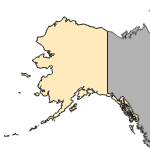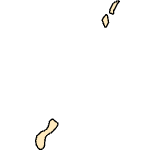Piaractus mesopotamicus
(small-scaled pacu)
Fishes
Exotic |
|
Common name: small-scaled pacu
Taxonomy: available through
www.itis.gov
Identification: H. A. Britski (personal communication) considers Piaractus mesopotamicus one of three valid large pacu species (the others are P. brachypomus and Colossoma macropomum). Commonly used synonyms include Piaractus metrei, Colossoma metrei, and Colossoma mesopotamicus. In his taxonomic review, Machado-Allison (1982) used the name P. metrei (Berg 1895). This, however, is a junior synonym of P. mesopotamicus. At least some, and perhaps all, specimens taken in United States waters and identified as this species may actually have been the closely related Piaractus brachypomus. In addition, Piaractus specimens taken in United States waters have frequently been misidentified as red piranhas Pygocentrus nattereri.
Size: To about 85 cm SL, and reaches 20 kg in weight (Lovshin 1995).
Native Range: Restricted to the La Plata Basin, South America (Machado-Allison 1982), including the Paraguay/Parana rivers.



|

Alaska |

Hawaii |

Puerto Rico &
Virgin Islands |

Guam Saipan |
Hydrologic Unit Codes (HUCs) Explained
Interactive maps: Point Distribution Maps
Nonindigenous Occurrences:
A single fish (56 cm and 3515 g) was reported as taken in Florida by an angler from a brackish-water canal at Sunshine Parkway bridge near town of Cape Coral, Charlotte Bay drainage, Lee County, on 4 July 1987 (Courtenay, personal communication). A single specimen (identified as Piaractus mesopotamicus) was taken in Oregon from Herbert's Pond near Canyonville, Douglas County, in the Umpqua River drainage on 21 August 1989 (Logan et al. 1996).
Table 1. States with nonindigenous occurrences, the earliest and latest observations in each state, and the tally and names of HUCs with observations†. Names and dates are hyperlinked to their relevant specimen records. The list of references for all nonindigenous occurrences of Piaractus mesopotamicus are found here.
Table last updated 12/19/2025
† Populations may not be currently present.
Means of Introduction: All records probably represent aquarium releases.
Status: Failed in Florida and Oregon.
Impact of Introduction: The impacts of this species are currently unknown, as no studies have been done to determine how it has affected ecosystems in the invaded range. The absence of data does not equate to lack of effects. It does, however, mean that research is required to evaluate effects before conclusions can be made.
References: (click for full references)
Courtenay, W.R., Jr. - Florida Atlantic University, Boca Raton, FL.
Logan, D.J., E.L. Bibles, and D.F. Markle. 1996. Recent collections of continental exotic aquarium fishes in Oregon and thermal tolerance of Oriental weatherfish and pirapatinga. California Fish and Game 82(2):66-80.
Lovshin, L.L. 1995. The colossomids. p. 153-159. In C.E. Nash and A.J. Novotny (eds.). World animal science: production of aquatic animals: fishes. Elsevier Science, Amsterdam, The Netherlands.
Machado-Allison, A. 1982. Estudio sobre la subfamilia Serrasalminae (Teleostei, Characidae). Prte 1. Estudio comparado de los juveniles de las "cachamas" de Venezuela (generos Colossoma y Piaractus). Acta Biologica Venezuelica 11(3):1-101.
FishBase Summary
Author:
Leo Nico, and Bill Loftus
Revision Date: 8/13/2019
Peer Review Date: 7/10/2012
Citation Information:
Leo Nico, and Bill Loftus, 2025, Piaractus mesopotamicus (Holmberg, 1887): U.S. Geological Survey, Nonindigenous Aquatic Species Database, Gainesville, FL, https://nas.er.usgs.gov/queries/FactSheet.aspx?SpeciesID=428, Revision Date: 8/13/2019, Peer Review Date: 7/10/2012, Access Date: 12/19/2025
This information is preliminary or provisional and is subject to revision. It is being provided to meet the need for timely best science. The information has not received final approval by the U.S. Geological Survey (USGS) and is provided on the condition that neither the USGS nor the U.S. Government shall be held liable for any damages resulting from the authorized or unauthorized use of the information.